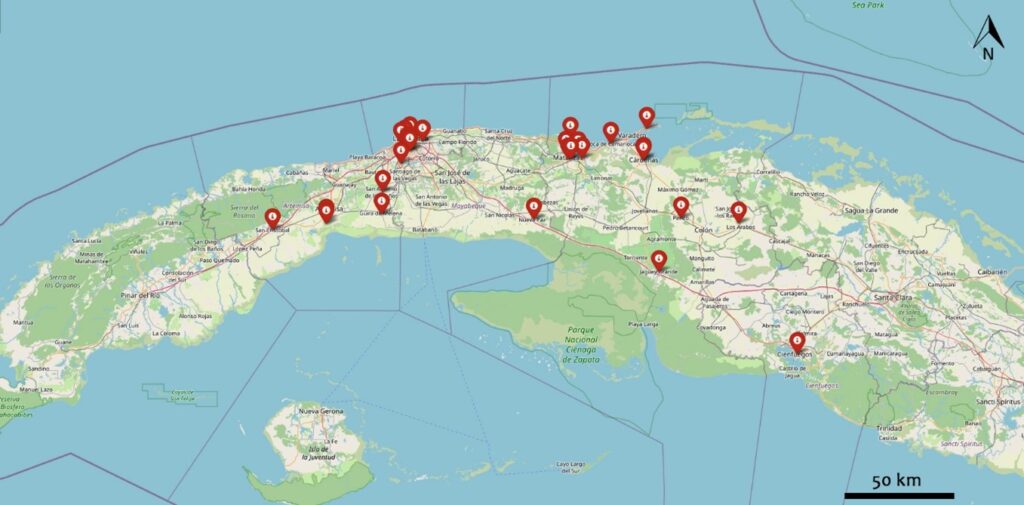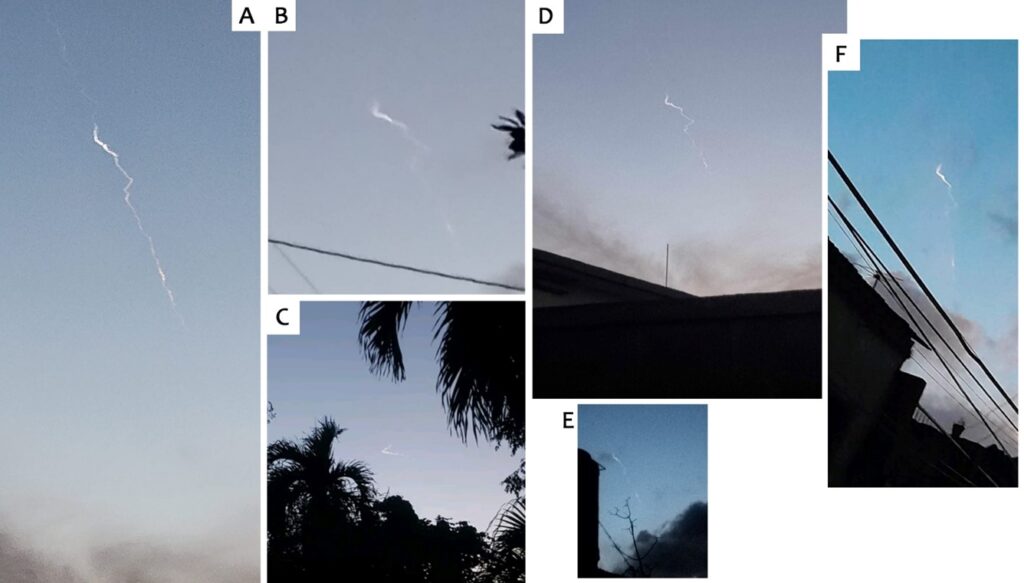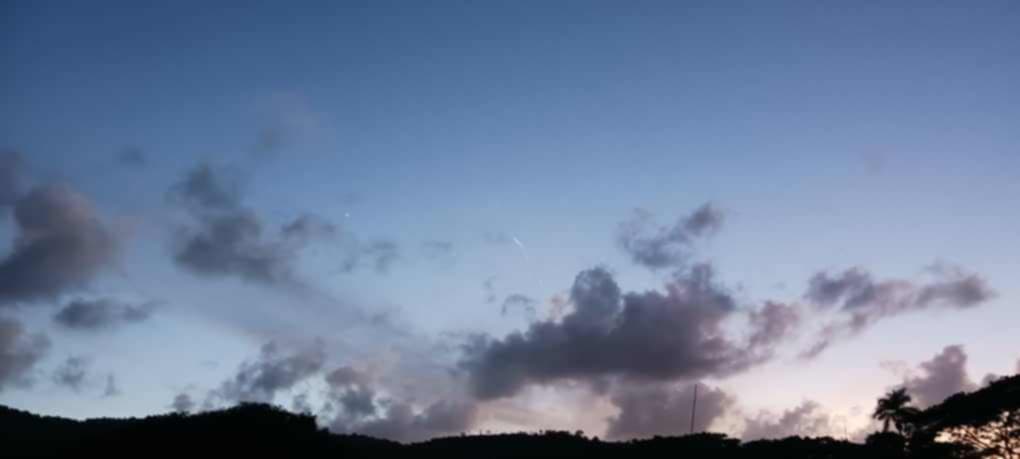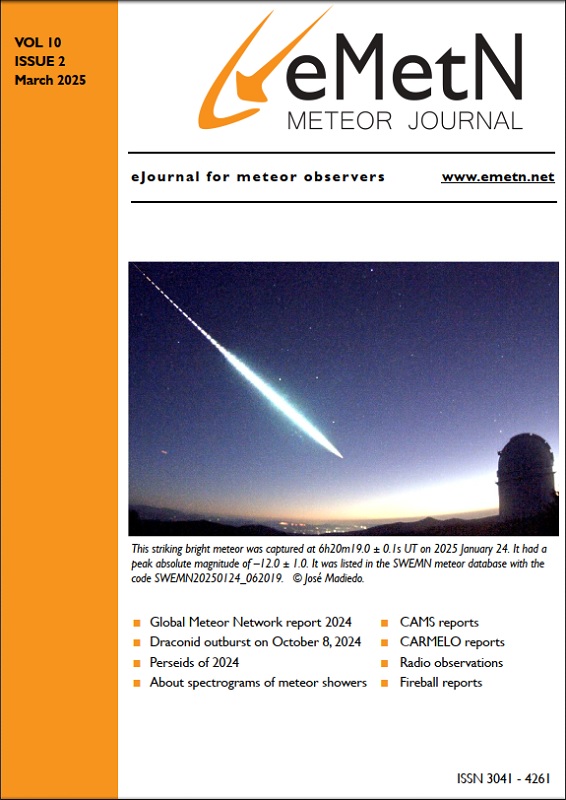Yasmani Ceballos-Izquierdo and Henry Delgado Manzor
1 Introduction
Fireballs captivate both the general public and the scientific community, while also enriching local culture through the documentation of notable historical events. In Cuba, there is a significant record of events related to fireballs and bolides. However, other luminous phenomena, such as airplane contrails, twilight effects from rocket launches, satellite passages, and the reentry of artificial objects, have sometimes been mistaken for these events (Ceballos-Izquierdo, 2024). Recently, misinterpretations of contrails as evidence of meteorite falls have become more common, as was the case with an event reported on January 22, 2023, in the province of Matanzas (Ceballos-Izquierdo, 2024). In this context, it is essential to thoroughly evaluate and document such phenomena to prevent misinterpretations and promote scientific understanding.
This report documents a singular event observed on October 31, 2024, in western Cuba, characterized by a smoke trail and coinciding visual reports from multiple provinces (Figure 1). Preliminary analysis suggests the passage of a bolide, which, based on its characteristics, could have produced meteorites. However, direct evidence of fragments on the ground has yet to be confirmed.
2 Discussion
Initial context of the event
The event was initially reported by social media users from Matanzas on October 31, 2024, between 7h11m p.m. and 7h13m p.m., who observed a notable smoke trail (Figure 2). At first glance, the trail did not resemble a typical aircraft contrail. Subsequently, witnesses from other provinces also reported the phenomenon, expanding the observation area.
Description of the trail and relevant observations
The observed trail initially appeared as a straight line but, within less than five minutes, acquired a twisted shape, a common feature of phenomena associated with fast-moving objects. This deformation may have been caused by upper atmospheric winds, which tend to curve and disperse trails left by rapidly moving objects. Twisted trails like this are characteristic of rotating meteoroids, and the observed density of the trail suggests that the object was of significant size. The absence of sound supports the hypothesis that the event occurred at such a high altitude that sound waves did not reach ground-level observers.
An observer from Playa, Havana, reported witnessing a bright blue light associated with the event, which left a visible trail in the sky. This detail is significant because the bluish coloration indicates a high-energy phenomenon, likely caused by intense friction as the object interacted with the upper layers of the atmosphere.
Preliminary interpretation
Cuba’s atmospheric conditions, combined with the presence of domestic and international air traffic, often lead to confusion in the interpretation of celestial phenomena. As part of this investigation, various efforts were undertaken to gather accurate information and verify the situation in the area of observation.
The authors contacted the Control Tower of the Juan Gualberto Gómez International Airport in Varadero. Using their Multilateration (MLAT) system, it was confirmed that no aircraft were present in the area at the time of the sighting, ruling out the possibility of the phenomenon being related to aerial activity. Additionally, the authors consulted the National Center for Seismological Research (CENAIS) to review data from the Camarioca seismic station, located in northern Matanzas Province. This review yielded no positive results, as no explosions or unusual seismic activity were recorded in the region during the event.
Meteorological satellite imagery was also examined for evidence of lightning strikes, but no indicators associated an analysis of Florida’s space activity records confirmed that no rocket launches took place on the date and time of the event. This further reinforced the conclusion that neither aircraft nor space activities were involved.
The observed pattern and witness descriptions align with phenomena associated with bolides or fireballs. Such events occur when a meteoroid enters Earth’s atmosphere and disintegrates, producing light and heat that create visible trails and, in some cases, meteorite fragments on the ground. However, it is noteworthy that specialized platforms for tracking such events, including NASA sensors, international bolide detection systems, and fireball reporting networks, did not detect this event. The authors reached out to these platforms but obtained no positive results. It is worth mentioning that bolides and even meteorite falls in Cuba have previously gone undetected by these systems, underscoring the importance of strengthening local capacities to identify and document these phenomena (Ceballos-Izquierdo et al., 2021, 2022).
3 Conclusion
The phenomenon observed on October 31, 2024, over western Cuba exhibits characteristics typically associated with a bolide. The twisted trail, lack of sound, and reports of a bright blue light suggest a high-energy event occurring at a great altitude. However, the fall of associated meteorites has not yet been confirmed.
References
Ceballos-Izquierdo Y. (2024). “Twilight effect in Cuba after SpaceX’s launch: What did observers really see?”. Revista Cubana de Física, 41, 1.
Ceballos-Izquierdo Y., Free D., Hughes A., Lucena F., Irizarry E., and Grullón M. E. (2022). “Bolas de fuego en el Caribe: Bases para futuras investigaciones”. Revista Cubana de Física, 39, 1.
Ceballos-Izquierdo Y., Orihuela J., Goncalves Silva G., Zurita M., Cardozo Mourão M., and Delgado Manzor H. (2021). “Meteorite and bright fireball records from Cuba”. Mineralia Slovaca, 54, 3–18.

Figure 1 – General map of western Cuba showing the sightings of the trail and bolide from October 2024, marked in red.

Figure 2 – Different aspects of the trail observed from various locations. Source: submitted to the authors by users on social media.




